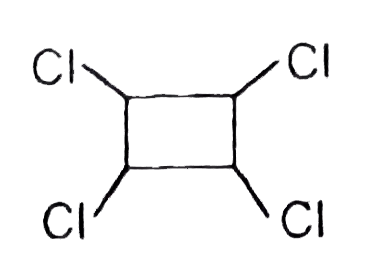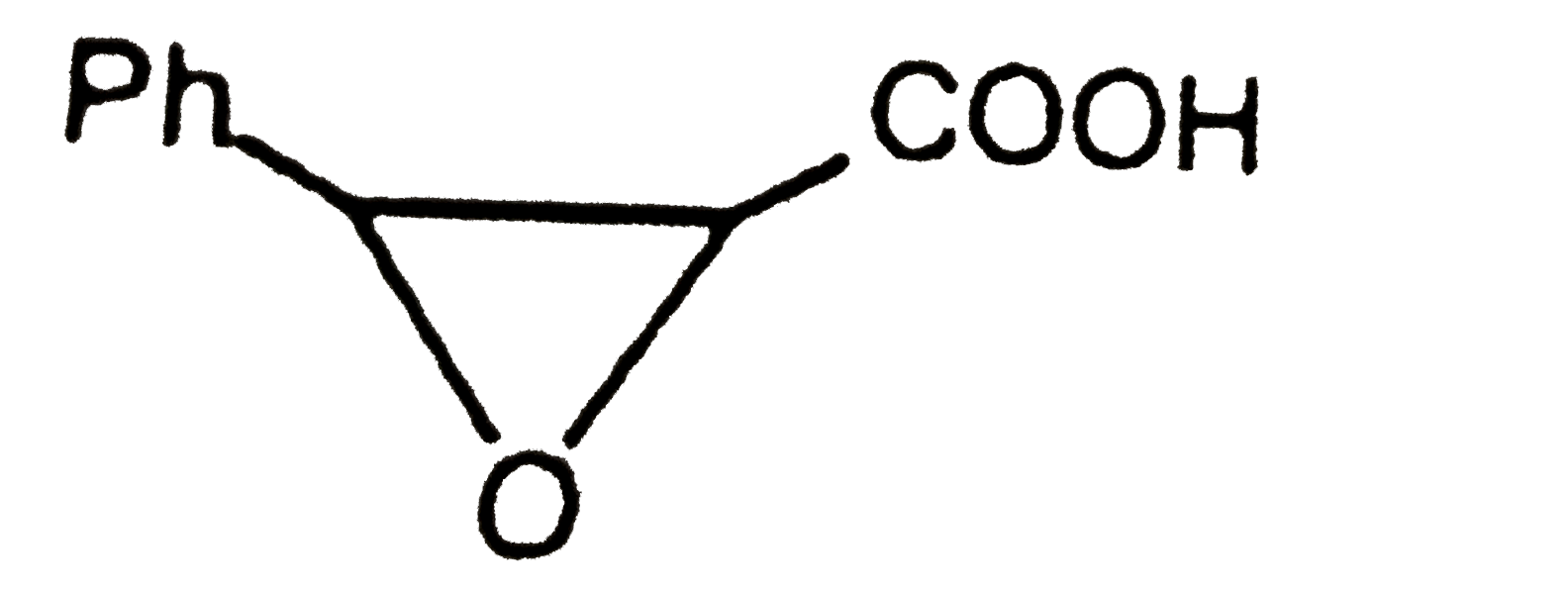For the given compound
(i) Total number of stereoisomers.
(ii) Number of opticallly active stereoisomers.
(iii) Total number of fractions on fractional distillation of all stereoisomers.
The correct Answer is:(I)
Number of stereocentres = 2 so total number of stereoisomers = = 4
(II) All 4 isomers are optically active. (III) Total enantiomeric pairs are 2, hence number of fraction will be 2.
To solve the question regarding the compound CH₃−CH(OH)−CH=CH−CH₃, we will break it down into three parts as requested:
Step 1: Total Number of Stereoisomers
1. Identify the Structure: The compound has a double bond between carbon atoms, which allows for geometrical isomerism (cis/trans isomerism).
2. Identify the Double Bond: The double bond is located between the second and third carbon atoms (C2=C3).
3. Geometrical Isomers: For the double bond to have geometrical isomers, the groups attached to the double-bonded carbons must be different. In this case:
- For C2 (attached to OH and CH₃) and C3 (attached to H and CH₂), we can have:
- Cis Isomer: OH and CH₃ on the same side.
- Trans Isomer: OH and CH₃ on opposite sides.
4. Count the Isomers: Since there is one double bond that can exhibit cis/trans isomerism, we can have 2 geometrical isomers.
5. Consider Other Stereoisomers: Additionally, we need to check for any chiral centers. In this compound, there is one chiral center at C2 (attached to OH, CH₃, H, and CH).
6. Total Stereoisomers Calculation: The total number of stereoisomers can be calculated using the formula:
Total Stereoisomers=2n (where n is the number of chiral centers)×(number of geometrical isomers)
Here, n=1 (one chiral center) and we have 2 geometrical isomers. Thus:
Total Stereoisomers=21×2=4
Step 2: Number of Optically Active Stereoisomers
1. Identify Chiral Centers: As previously mentioned, we have one chiral center at C2.
2. Optically Active Isomers Calculation: The number of optically active stereoisomers can be calculated using the formula:
Optically Active Isomers=2n
Where n is the number of chiral centers. Since n=1:
Optically Active Isomers=21=2
Step 3: Total Number of Fractions on Fractional Distillation
1. Identify Enantiomeric Pairs: The optically active isomers are enantiomers (mirror images of each other). Since we have 2 optically active stereoisomers, we have 1 pair of enantiomers.
2. Total Fractions Calculation: The number of fractions obtained from fractional distillation is equal to the number of enantiomeric pairs. Thus:
Total Fractions=1 (pair of enantiomers)
Final Answers:
(i) Total number of stereoisomers: 4
(ii) Number of optically active stereoisomers: 2
(iii) Total number of fractions on fractional distillation of all stereoisomers: 2
---
2. Identify the Double Bond: The double bond is located between the second and third carbon atoms (C2=C3).
3. Geometrical Isomers: For the double bond to have geometrical isomers, the groups attached to the double-bonded carbons must be different. In this case:
- For C2 (attached to OH and CH₃) and C3 (attached to H and CH₂), we can have:
- Cis Isomer: OH and CH₃ on the same side.
- Trans Isomer: OH and CH₃ on opposite sides.
4. Count the Isomers: Since there is one double bond that can exhibit cis/trans isomerism, we can have 2 geometrical isomers.
5. Consider Other Stereoisomers: Additionally, we need to check for any chiral centers. In this compound, there is one chiral center at C2 (attached to OH, CH₃, H, and CH).
6. Total Stereoisomers Calculation: The total number of stereoisomers can be calculated using the formula:
Total Stereoisomers=2n (where n is the number of chiral centers)×(number of geometrical isomers)
Here, n=1 (one chiral center) and we have 2 geometrical isomers. Thus:
Total Stereoisomers=21×2=4
2. Optically Active Isomers Calculation: The number of optically active stereoisomers can be calculated using the formula:
Optically Active Isomers=2n
Where n is the number of chiral centers. Since n=1:
Optically Active Isomers=21=2
2. Total Fractions Calculation: The number of fractions obtained from fractional distillation is equal to the number of enantiomeric pairs. Thus:
Total Fractions=1 (pair of enantiomers)
(i) Total number of stereoisomers: 4
(ii) Number of optically active stereoisomers: 2
(iii) Total number of fractions on fractional distillation of all stereoisomers: 2
Topper's Solved these Questions
- STEREOISOMERISMBOOK - RESONANCE ENGLISHCHAPTER - STEREOISOMERISMEXERCISE - EXERCISE (PART 1 SECTION (J))
6 Videos
- STEREOISOMERISMBOOK - RESONANCE ENGLISHCHAPTER - STEREOISOMERISMEXERCISE - EXERCISE (PART 1 SECTION (K))
2 Videos
- STEREOISOMERISMBOOK - RESONANCE ENGLISHCHAPTER - STEREOISOMERISMEXERCISE - EXERCISE (PART 1 SECTION (H))
2 Videos
- SOLUTIONSBOOK - RESONANCE ENGLISHCHAPTER - SOLUTIONSEXERCISE - Advabced Level Problems (PART-2)
35 Videos
- STRUCTURAL IDENTIFICATIONBOOK - RESONANCE ENGLISHCHAPTER - STRUCTURAL IDENTIFICATIONEXERCISE - Advanced level Problems (Part-III)
12 Videos
Similar Questions
Knowledge Check
CH3=CH=CH−CH=CH−CH3, total number of geometrical isomer is :
A2B3C4D6CH3−CH∣CH3−CH2−CH3Cl2−−−−−→hv(x) = Number of monochloro product including stereoisomers.
A4B5C6D7How many enol form is possible for CH3−CH2−O∣∣C−CH2−CH3 (including stereoisomers) will be ?
A2B3C4D5
The IUPAC name of the compound is
CH3−CH∣CH3−CH2−CH(OH)−CH2
View SolutionCH3−C∣∣CH2−CH2OH
ii CH_(3)-CH=CH-CHO
View SolutionCH2=C=CH−CH3, total number of σ & π bonds in given compound will be :-
View SolutionTotal number of stereoisomer possible for the compound.
H3C−CH=CH−CH=CH−CH=CH−Ph
View SolutionTotal number of optical active stereoisomers of the following compound is :
CH3−CH=CH−CHOH−CH=CH−CH3
View Solution


 is.
is.